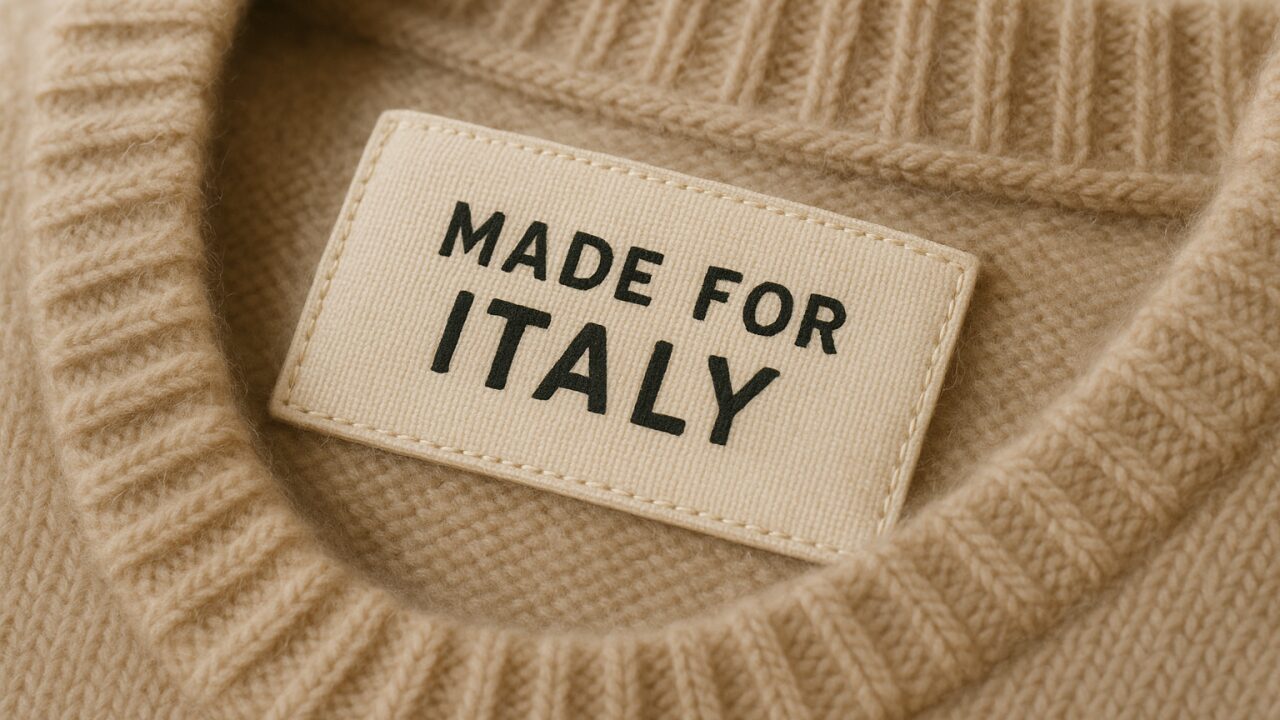There was a time , and not so long ago, if you squint, when Made in Italy functioned like a religious indulgence: you could slap it on anything, from a $5 keychain to a $5,000 handbag, and it absolved sins. Three words that worked like a cheat code in a video game. They carried a gravitational pull completely disproportionate to reality. Americans and Japanese would swoon, Germans would nod in reverence, even the French, who hate to acknowledge Italians for anything beyond football and food, would concede: “Yes, but their clothes, their chairs, their leather.”
It was unfair how effective it was. It was like playing chess against an opponent who keeps losing because they are too distracted by how shiny your pieces look. Italy, for decades, got to coast on a halo effect built on pasta, Vespa scooters, and Sophia Loren’s neckline.
And then, predictably, it all began to rot. Not with a spectacular collapse (Italy never collapses spectacularly, it prefers the slow-motion agony of erosion, the national sport of decline that feels endless but always “still holding together”), but the way a wool sweater unravels: quietly, thread by thread. A factory closure here. A scandal about labor conditions there. A Vogue exposé about luxury brands quietly outsourcing production to factories that look more like sweatshops than ateliers.
The questions multiplied. Who actually makes this? Under what conditions? Why should I trust this brand when every other brand is screaming authentic and sustainable with the desperation of a drunk uncle insisting at Christmas dinner that his crypto is “different”? And here’s the worst part: everyone already knew the answers. The myth was cracking not because of one big lie, but because too many small truths leaked out.
Here’s the dirty little secret: Made in Italy was never really for Italians. Italians don’t need an English-language label to know if a tomato sauce is edible or a jacket is worth the price. Made in Italy was for everyone else. It was a love letter written in a language Italians don’t even use at home. It was performance. A mask. An elaborate export fantasy carefully staged for foreign audiences while the domestic theater, shuttered factories, underpaid artisans, traditions reduced to sad folkloric props, fell into disrepair.
Try explaining global excellence to your neighbor in Prato who used to work in textiles before his factory closed and got replaced by a logistics warehouse. Try selling “craft” to a Milanese seamstress who now freelances for fast fashion platforms to pay rent. Try convincing your own people of your authenticity when they see the gap between your glossy brand campaigns and the abandoned warehouses just down the street.
So maybe the point is not Made in Italy. Maybe the point is Made for Italy.
I know, it sounds like a slogan spat out by a junior marketing intern after too much espresso, but sometimes the simplest truths hide in clichés. Brands must prove themselves at home first. Serve their workers, their communities, their ecosystems. Because applause abroad is cheap. You can buy followers, you can pay influencers, you can fake credibility with bots. But you cannot buy the respect of your neighbor who knows exactly when you’re lying and has no problem telling the entire café you’re full of shit.
Proof? In 2024 more than two thousand small luxury factories in Italy shut down. Two thousand. That isn’t a number, that’s an extinction. Prada, to its credit, opened an academy in Umbria to train artisans. But let’s be clear: this isn’t some enlightened act of corporate benevolence. It’s survival disguised as strategy. No new hands, no myth. No myth, no margin.
And here’s the twist: this schizophrenia isn’t uniquely Italian. Every brand everywhere is caught in the same grotesque dance: shouting values while cutting costs, posing local while scaling global, preaching inclusivity while consolidating power. The contradiction is universal. Italy just makes it louder, more theatrical, more operatic. Which is both the tragedy and the comedy of it all.
So what’s next? If even Made in Italy, with all its cultural capital, cannot survive without being for Italy, then no label, no brand, no myth can. And here is where the cynicism turns practical, because pointing fingers is fun but not enough.
What Could Actually Change (Not That Anyone Will Listen)
Stop fetishizing labels, invest in substance. If a brand can’t prove credibility in Milan, Bari, or Bologna, it has no business pretending in Manhattan. Build respect at home first. If your neighbor doesn’t trust you, why should Tokyo?
Pay artisans like adults, not interns. Stop marketing “craftsmanship” while treating the craftspeople like disposable props. The hypocrisy is too obvious now. Respect is not a campaign, it’s a payroll line item.
Kill the folklore. No more “Italy as postcard.” The world doesn’t need another sepia-toned Tuscan vineyard shot. If you want to be global, show the contradictions, the mess, the grit. That’s more authentic than another fake sun-drenched cliché.
Make ESG real, not PowerPoint. Training programs, fair contracts, transparent supply chains. Less sustainability theater, more substance. Stop confusing glossy reports with reality.
Have the courage to tell the truth. Admit imperfection. Admit failures. The brands that survive will be the ones that dare to look their own people in the eye and say, “Yes, we screwed up, and here’s what we’re doing about it.”
The future of Italian brands will not be about exporting more handbags or bottles of Barolo. It will be about exporting credibility. And credibility isn’t a stitched label or a national anthem mutilated into a tagline. It’s when your own people believe you, even reluctantly.
So maybe the next luxury is not a product at all. It’s a story that feels true in Milan before it even attempts to impress Manhattan. Global trust doesn’t start in airports or duty-free shops. It starts in your backyard, where your neighbor knows the truth and will happily gossip about your lies.





